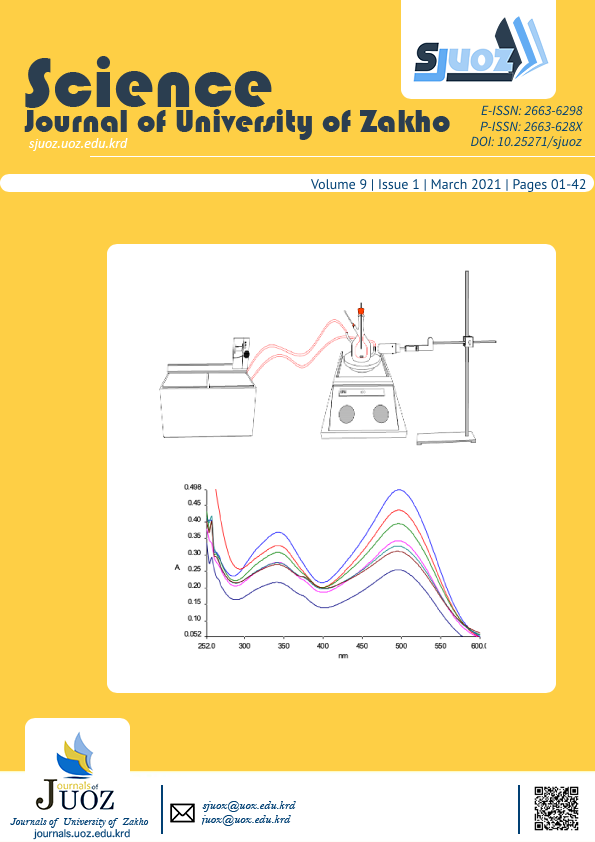Evaluation of Heavy Metals Concentration in Some Bottled Water Brands in Kurdistan Region
Abstract
Recently Bottled waters became the main resources for drinking water supply, where the use of bottled waters in some region has exchanged the distribution system of drinking water. However, several different chemicals may be found in drinking bottled water, for instance heavy metals, that have accumulated in lethal amounts which could affect human health after prolonged periods of exposure. Therefore, this study was carried out to evaluate some bottled water brands in Kurdistan region of Iraq in term of their contents of heavy metal comparing with both WHO and SQI water standards. About 108 samples were collected (18 brands; 6 samples from each brand) from October to December 2019, bought randomly from grocery shops and supermarkets in Duhok, Erbil and Sulaymaniyah city, Kurdistan region, Iraq. Cobalt (Co), Cadmium (Cd), Lead (Pb), Copper (Cu), Chromium (Cr), Iron (Fe), Selenium (Se) and Mercury (Hg) concentrations were determined by atomic absorption spectrophotometer. Heavy metal pollution index (HPI), degree of contamination (Cdeg) and heavy metal evaluation index (HEI) were also calculated for evaluating the overall quality of bottled water. Results of individual criteria revealed that, excluding Cd and Hg, heavy metals content in all bottled water samples were lower than approved limits according to Iraqi's (IQS:417) and WHO standards. Though, the results exhibited that Cd content in some of the studied water samples was greater than the allowable limits (3μg/L) according to the depended standards. Concerning the values of metal pollution indices, although there were higher HPI values than critical value (100) in three water brands i.e. Al-Joud, Al-Waha and Sanbenedetto, the indices values for all other bottled water were below the critical value. According to the results of this study, it can be concluded that except for Cd value in few brands and all Hg values, the studied bottled water are safe for drinking. Moreover, companies of bottled water package are recommended to monitor their products through analyzing the water sample periodically and use activated carbon filtration to ensure the safety of drinking bottled water.
Full text article
Authors
Copyright (c) 2021 Sarwar M. R. Ahmed

This work is licensed under a Creative Commons Attribution 4.0 International License.
Authors who publish with this journal agree to the following terms:
- Authors retain copyright and grant the journal right of first publication with the work simultaneously licensed under a Creative Commons Attribution License [CC BY-NC-SA 4.0] that allows others to share the work with an acknowledgment of the work's authorship and initial publication in this journal.
- Authors are able to enter into separate, additional contractual arrangements for the non-exclusive distribution of the journal's published version of the work, with an acknowledgment of its initial publication in this journal.
- Authors are permitted and encouraged to post their work online.
